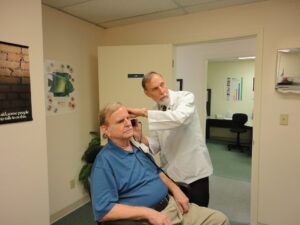 A biocompatible and highly stretchable optical fiber made from hydrogel may be implanted in the body to deliver therapeutic pulses of light or light up at the first sign of disease. This hydrogel fiber was developed by researchers from MIT (Massachusetts Institute of Technology) and Harvard Medical School. Hydrogels have already shown significant potential in everything from wound dressings to soft robots, but until now their fiber optic applications have been limited from their lack of toughness. Hydrogels are made of hydrophilic polymer chains that absorb up to 90 percent water. Such fiber optic products aren’t very strong or durable, but by adding glass tiny fibers the researchers created a tough, bendable, stretchable material.
A biocompatible and highly stretchable optical fiber made from hydrogel may be implanted in the body to deliver therapeutic pulses of light or light up at the first sign of disease. This hydrogel fiber was developed by researchers from MIT (Massachusetts Institute of Technology) and Harvard Medical School. Hydrogels have already shown significant potential in everything from wound dressings to soft robots, but until now their fiber optic applications have been limited from their lack of toughness. Hydrogels are made of hydrophilic polymer chains that absorb up to 90 percent water. Such fiber optic products aren’t very strong or durable, but by adding glass tiny fibers the researchers created a tough, bendable, stretchable material.
In other words, a hydrogel is an extremely absorbent type of gel, a network of simple polymers that can contain up to 99,9% water, by weight. As the walls of this hydrogel, the material lining the interior of an optical fiber is clear but tuned to produce a phenomenon called total internal reflection. This means that light that moves at certain angles from the cable’s core material to its lining will be entirely reflected. By tuning hydrogel to create the same effect, scientists and engineers from MIT created a form of biocompatible optical cable. Getting light into the body is important: in the most basic sense, pulses of light are information, and having a hard-wired line of communication to implanted technology will be essential for development. However, it should be noted, such a wireless technique is still too unreliable for most people to bet their lives on, and it’s also notoriously hard on power consumption.
The researchers say that fiber optic products may serve as a long-lasting implant that would bend and twist with the body without breaking down. The researchers also have devised multiple recipes for making tough but pliable hydrogels out of various biopolymers. Plus the team has come up with ways to bend hydrogels with various surfaces such as metallic sensors and LEDs. Each optical fiber transmitted light without significant attention or fading. These fiber optic devices also found that fibers could be stretched over seven times their original length without breaking. Such modern fiber optic products can be used for long-term diagnostics, to optically monitor tumors or inflammation.
In other words, hydrogel fibers are interesting and provide a compelling direction for embedding light within the human body. Only considerable efforts in optimizing and managing the physical and mechanical properties of fibers will enable practical applications of medical relevance.
Optromix is a fast-growing vendor of fiber Bragg grating (FBG) products line: fiber Bragg grating sensors, FBG interrogators, and multiplexers, Distributed Temperature Sensing (DTS) systems. We create and supply a broad variety of top-notch fiber optic solutions for the monitoring of various facilities all over the world.
If you are interested in Optromix fiber optic products, please contact us at info@optromix.com


 Modern research allows creating more and more biocompatible and highly stretchable
Modern research allows creating more and more biocompatible and highly stretchable  Nowadays the production of optical fibers is robust and flexible enough to address an exciting new range of biomedical applications.
Nowadays the production of optical fibers is robust and flexible enough to address an exciting new range of biomedical applications.  Optical fibers
Optical fibers The uses of
The uses of  Fiber optic products
Fiber optic products Fiber optic devices
Fiber optic devices Aircraft structures require regular, scheduled inspections and monitoring of all possible hazards due to their special conditions and the principles of their design. Therefore, structural health monitoring is conducted through
Aircraft structures require regular, scheduled inspections and monitoring of all possible hazards due to their special conditions and the principles of their design. Therefore, structural health monitoring is conducted through